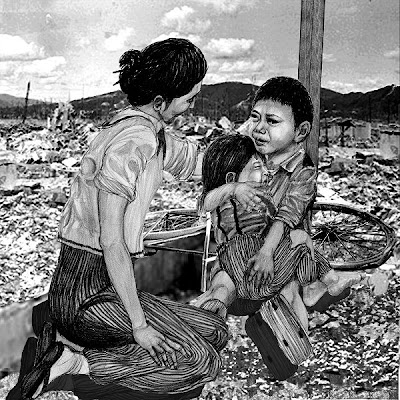NONVIOLENT PROTEST AND PERSUASION
Communications with a Wider Audience
#8. Banners, posters, and displayed communications
The Veterans for Peace took the Newseum in Washington, DC by surprise with a banner drop both inside and outside. Striking, provocative and effective.
Here is a video of the 2010 action.
See photos from Flickr | See photos from Ellen Davidson
Tuesday, August 23, 2011
#2 of 198 Methods of Nonviolent Direct Action
NONVIOLENT PROTEST AND PERSUASION
Formal Statements
#2. Letters of opposition or support
Formal Statements
#2. Letters of opposition or support
"...I am writing you today, not asking for forgiveness for what I decided to do, but to give you an idea of what brought me to that decision to leave the Army and speak out against the Occupation...." James Circello, Iraq Veterans Against The War
Read More: Open Letter to the Government from an AWOL Soldier
198 Methods of Nonviolent Action
These methods were compiled by Dr. Gene Sharp and first published in his 1973 book, The Politics of Nonviolent Action, Vol. 2: The Methods of Nonviolent Action. (Boston: Porter Sargent Publishers, 1973). The book outlines each method and gives information about its historical use.
Monday, August 22, 2011
# 1 of 198 Methods of Nonviolent Direct Action
Nonviolent Protest & Persuasion (Categorized by Gene Sharp of Albert Einstein Institute
Formal Statements: #1 - Public Speeches
"The calling to speak is often a vocation of agony, but we must speak" MLK, Jr.
Martin Luther King Jr.'s 1967 Riverside Church Speech: A Time to Break Silence
Tuesday, August 9, 2011
"We Did the Unthinkable..." Hiroshima-Nagasaki
 |
| Ralph Hutchison & Libby Johnson at Y-12 - Remembering those who perished. Photo: Jim Toren |
"We stand against the death of a thousand cuts -- of dreams unrealized, of hope crushed, of morality corrupted, of history distorted, of peace denied-- by the Bomb, by the policies that continue the global nuclear arms race, by the diversion of our common treasury to build more and more and more bombs and more and more bomb plants."
Ralph Hutchison, August 6, 2011
Oak Ridge Environmental Peace Alliance
 |
| Ashes of Hiroshima |
Laura Sorensen, Asheville, North Carolina, speaking at the birthplace of the Hiroshima bomb in Oak Ridge, Tennessee
Subscribe to:
Comments (Atom)







